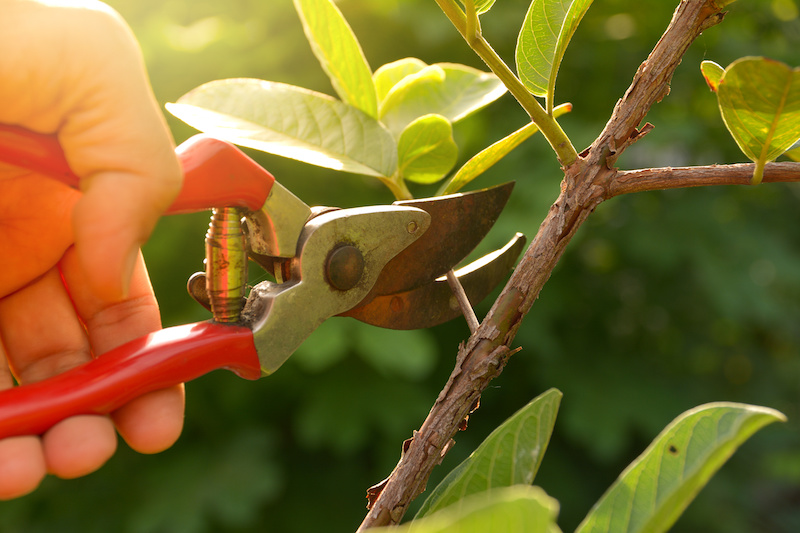
The main aim of the game with Summer Pruning is to get new stems to bear flowers, control vigorous shoots, firm up this year’s wood and tame new shoots. One important top tip is not to prune in a drought, as plants will lack vigour and pruned stems could die back.
After flowering, some ornamental plants will go on to form colourful berries, fruits, hips or seedheads so think carefully before you go attacking every plant in your garden. The plants you want to prune are those where unwanted seed development will take away energy from the plant and ones whose flowers stay on and rot which can cause damage to leaves and shoots as well as looking unsightly. We suggest you deadhead your lilacs (Syringa), Rhododendrons, Chaenomeles, Roses and Summer Perennials once they have finished flowering. As a rule of thumb simply hold the flower in your hand, visually slide down the flower stem until you come to a leaf, cut the stem just above this leaf.
Spurs are short shoots that produce flowers and fruits. Pruning spurs on top fruit like apples and pears and also on wisteria helps to put energy into buds at the base of the shoot rather than continuing new growth. Shorten all of this year’s growth back to a few bugs from the base of each stem. You will get more flowering buds, a bigger crop and the plant will be more energy efficient!
Plants to prune include apples, currants, gooseberries and pears.
To maintain a formal look and keep the garden trim and tidy, prune back cotoneaster, pyracantha (mind the spikes), climbing and rambling roses and wisteria. If you regularly the in stems of these plants to wires and supports you can train them to cover walls, fences and other structures. However once your space is covered further growth should be trimmed and kept within its boundaries. Regular summer training will help to keep the structural appearance of your plant.
Prune bay, box (Buxus) Euonymus and Yew (Taxus) to keep things tidy and encourage more side shoots. You can also clip these plants to form topiary shapes. Pinching out shoot tips will encourage side shoots further down the stem and result in bushier growth.
Plums and cherries should only be pruned in summer. This is because the silver-leaf disease is carried in spores by the air in winter. If these spores get in pruning cuts you will have trouble. Pinch or cut the current season’s growth back to a couple of buds along each stem. Other plants to trim back for this reason are Rhododendrons, apricots and laburnum.
Forsythia: prune after flowering removing some old stems and shortening younger ones.
Evergreen Ceanothus, prune after flowering shortening all shoots by a third to half. Never cut back into old unproductive wood (i.e. just sections with green leaves on).